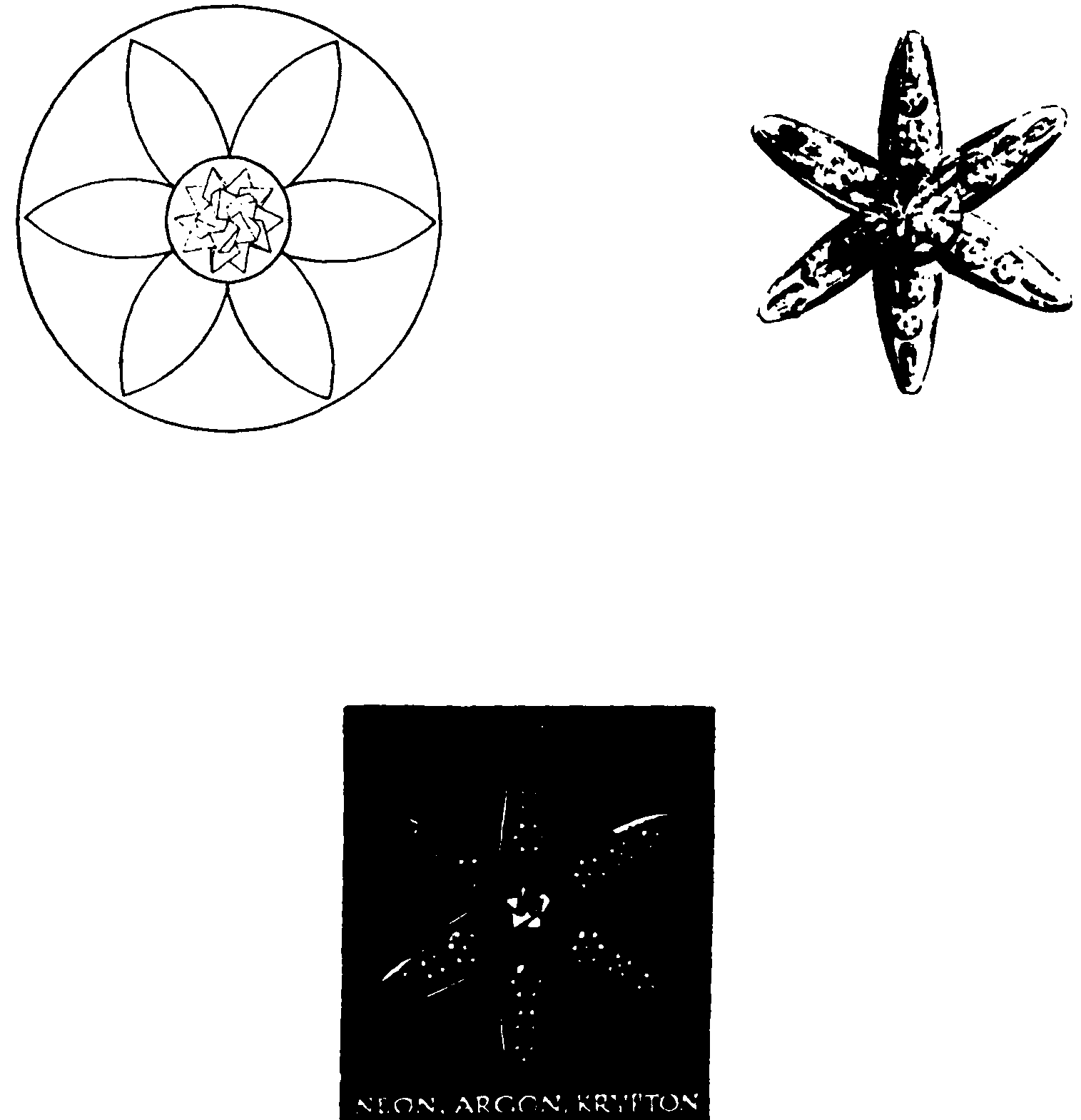
FIG. 147. TYPES OF THE STAR GROUP

THIS group comprises those elements known as the inert gases. Their characteristic valence is O. In the Pendulum diagram they appear on the middle line, alternately with the Bars Group.
Each inert gas has the appearance of a flat six-armed star. All the six arms within one element are the same. Fig. 147.
The arms radiate from a central sphere made of five intersecting tetrahedrons. This sphere first occurs in Neon and is the group Ne120 with which we are familiar. Helium, which is classed by chemists with the inert gases, has a different configuration and has been considered in the Hydrogen Group.
Each member of the Star Group has its meta variety or isotope. On examination of the diagrams it will be seen that in each meta variety each of the six arms has seven more Anu. Therefore the difference between Neon and Meta-Neon is exactly forty-two Anu; and so with all the other elements and their isotopes in the group.
One gas was discovered in the clairvoyant investigations of 1907, for which there is no place in the list of atomic numbers. Its rarity was then described by saying that there might be one in the atmosphere of an ordinary-sized room. It was named by us " Kalon," the " beautiful." and its diagram was published, with that of its meta variety.
ATOMIC
ANU ELEMENT CENTRE 6 ARMS
NO.
10
360 Neon Ne120 6 [Ne22+(3Li4)+(2H3)]
18
714 Argon Ne120 6 [N63 i- Ne22+Ar14]
36
1,464 Krypton Ne120 6 CN63 +N110+Ne22+mNe15+Ar14]
54
2298 Xenon Ne120 6 [Xe15+Xe14+N63+2N110+Ne22
+mNe15+Ar14]
-
3,054 Kalon Ne120 6 [Xe15+Xe14+2N63+2N110+2Ne22
+
2mNe15+ 2Ar14+ Ka12J
86
3,990 Radon Ne120 6 [Xe15+Xe14+2N63+3N110+3mNe22
+
3mNe15 + 3Ar14+L7]
250
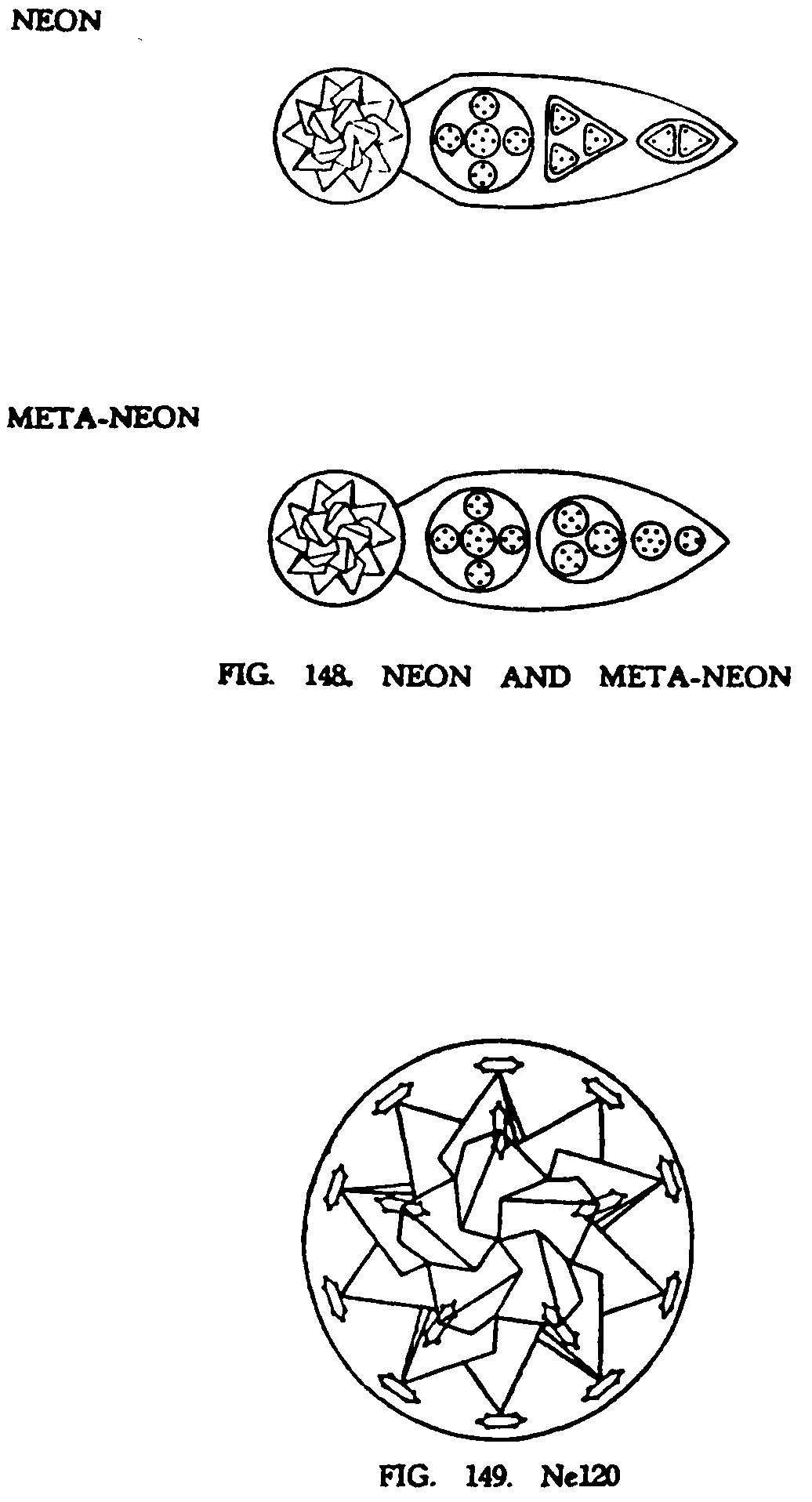
As already stated. Neon is in the form of a flat star, with a central globe and six radiating arms. Fig. 148.
The central globe consists of five interpenetrating tetrahedrons, each tetrahedron being similar to that in Adyarium, Ad24. These five tetrahedrons ccmFo:e a form which generates the dodecahedron and icosahedrcn. The group occurs often as the central globe of elements and is distinguished as Ne120. Fig. 149.
Star. Each arm of the star is composed of three bodies, including one of five spheres, Ne22 which occurs in all the members of this group. Then come three Li4, and finally a group containing two triplets. 2H3.
Neon
= Ne120-f-6(Ne22+3Li4-f-2H3)
Central
globe = 120 Anu
Isotope
of Neon. Meta-Neon differs from Neon by the insertion of an additional
Amu in each of the groups included in the second body within its arm, and
substituting a group of seven Anu for one of the triplets in the final
body. Fig. 148.
Meta-Neon
= Ne120 +6 [Ne22-bmNelS-f-L7+H3]
Central
globe = 120 Anu
Six
arms of 47 Anu = 282 _
Total
= 402 Anu
Number
weight ~ - 2233
252
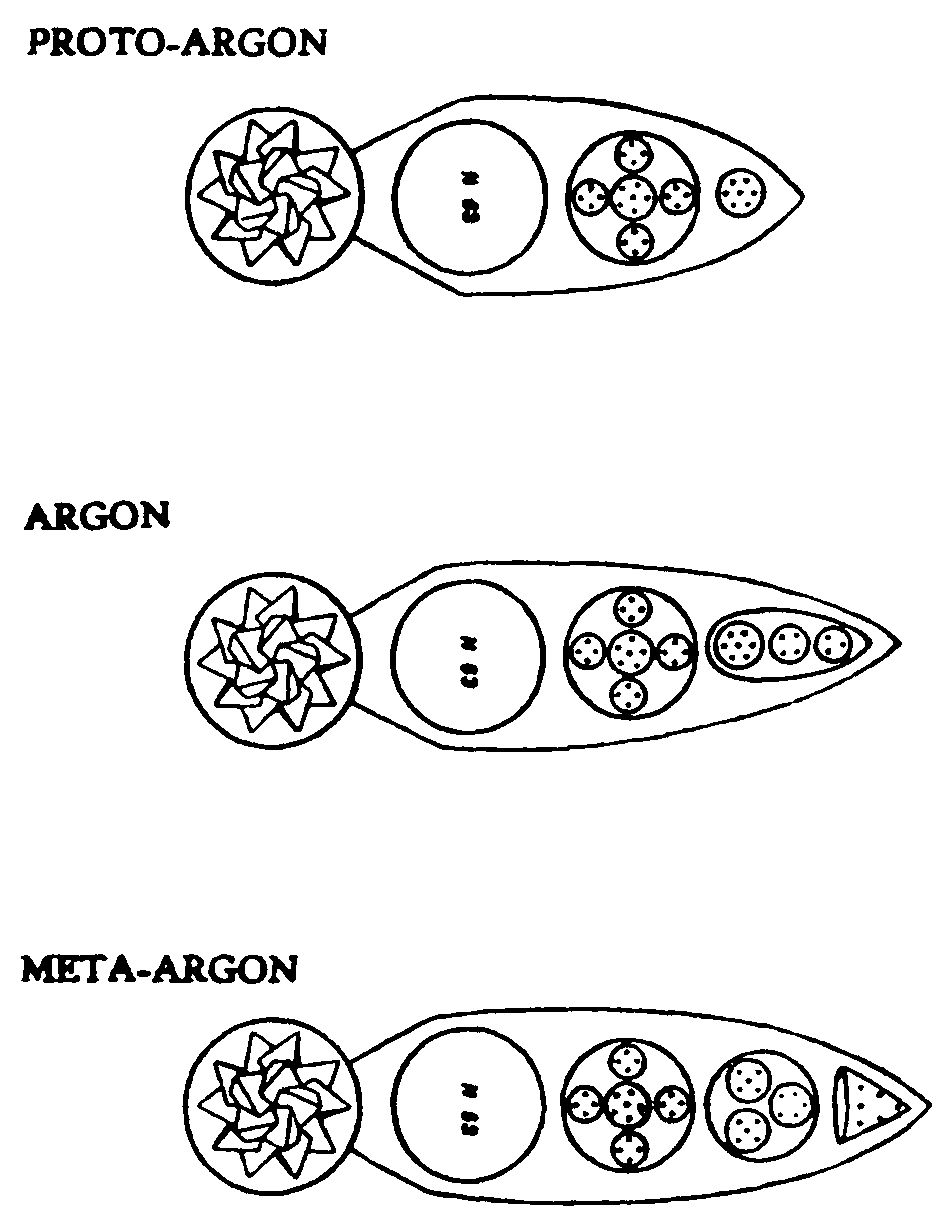
Argon
-- Ne120-f-6(N63+Ne22+Ar14)
Central
globe
-- 120 Anu
Mesa-Argon. This isotope of Argon contains seven more Anu in each arm, the Ar14 being replaced by m-Ne15 and a cone of six Anu.
Meta-Argon
=_-- Ne120-1-6(N63+Ne22-f-mNe15+mAr6)
Central
globe = 120 Anu
6
arms of 106 Anu ----- 636
Total
- 756 Anu
A curious irregularity appears in Argon. When its weight was determined it was found to be heavier than Potassium instead of being lighter. Argon comes, therefore, out of its proper place in the Periodic Table. But clairvoyant research shows that it does not in reality do so, the true Argon does come in its right place, and its number weight is 37.33. We have called the lighter variety proto-Argon. It is extremely rare in the atmosphere, and the ordinarily known Argon is the commoner variety.
Proto-Argon
-Ne120-I-6(N63+Ne22+L7)
Central
globe
-= 120 Anu
6
Arms of 92 Anu = 552 .,
254
OCCULT CHEMISTRY
Star.
Each
arm of the star contains constituents from Argon and Meta-Argon. with the
addition of an N110. The groups N110 and N63 appear constantly in the building
up of these elements. When these two bodies appear one above the other
there is a strong attraction between them; the sphere-wall of N110 is pulled
towards N63, while the sphere wall of the latter undergoes a flattening
compression.
256
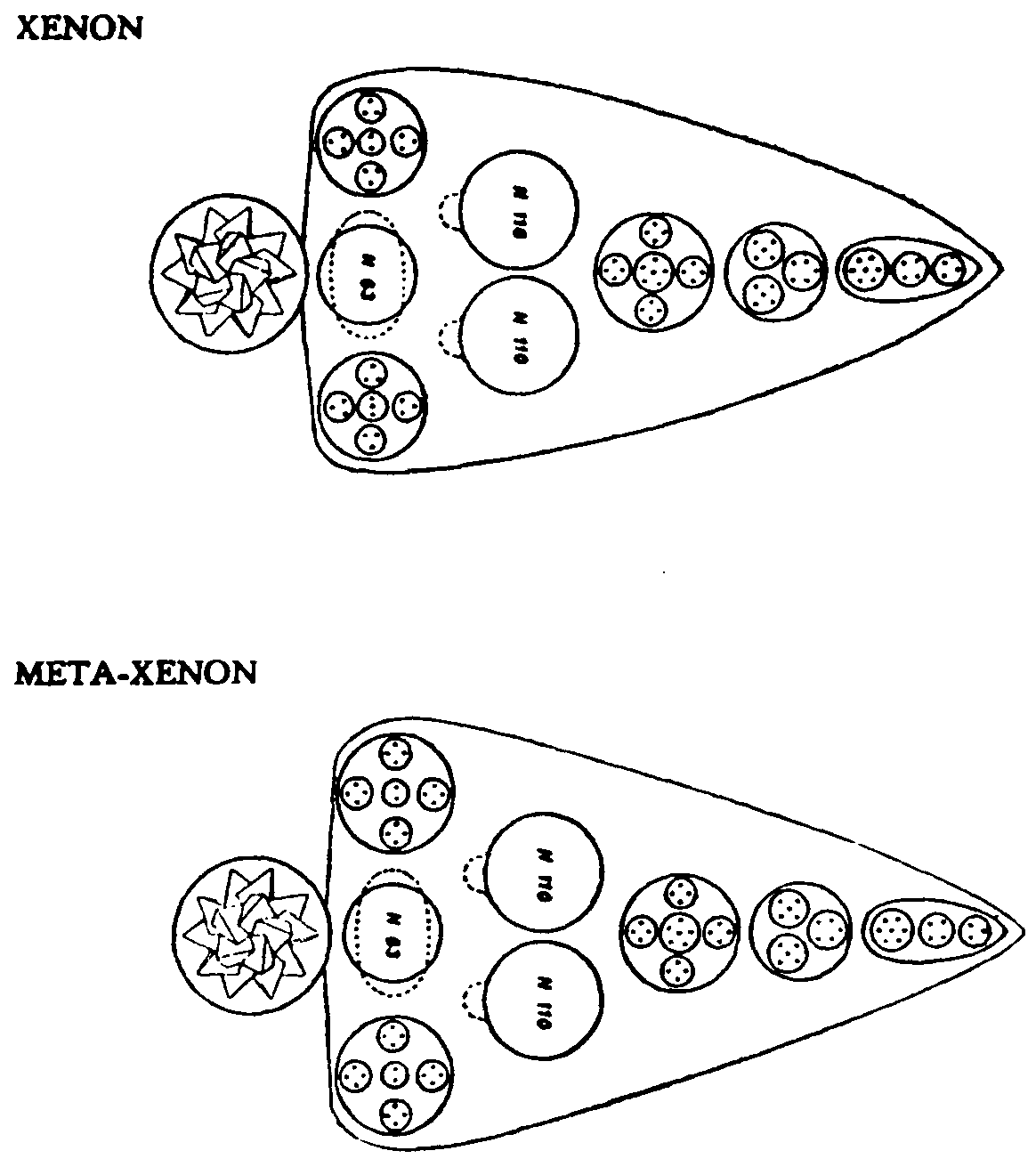
Star.
Each
arm of the star contains the constituents of Krypton. with the addition
of another N110 globe and two smaller spheres, Xe14 and Xe15.
Meta-Xenon
Nel20+6(2mXel8+N63+2NI10+Ne22+mNel5+Arl4.I
Central
globe
== 120 Anu
6
arms of 370 Anu = 2220 ..
258
OCCULT CHEMISTRY
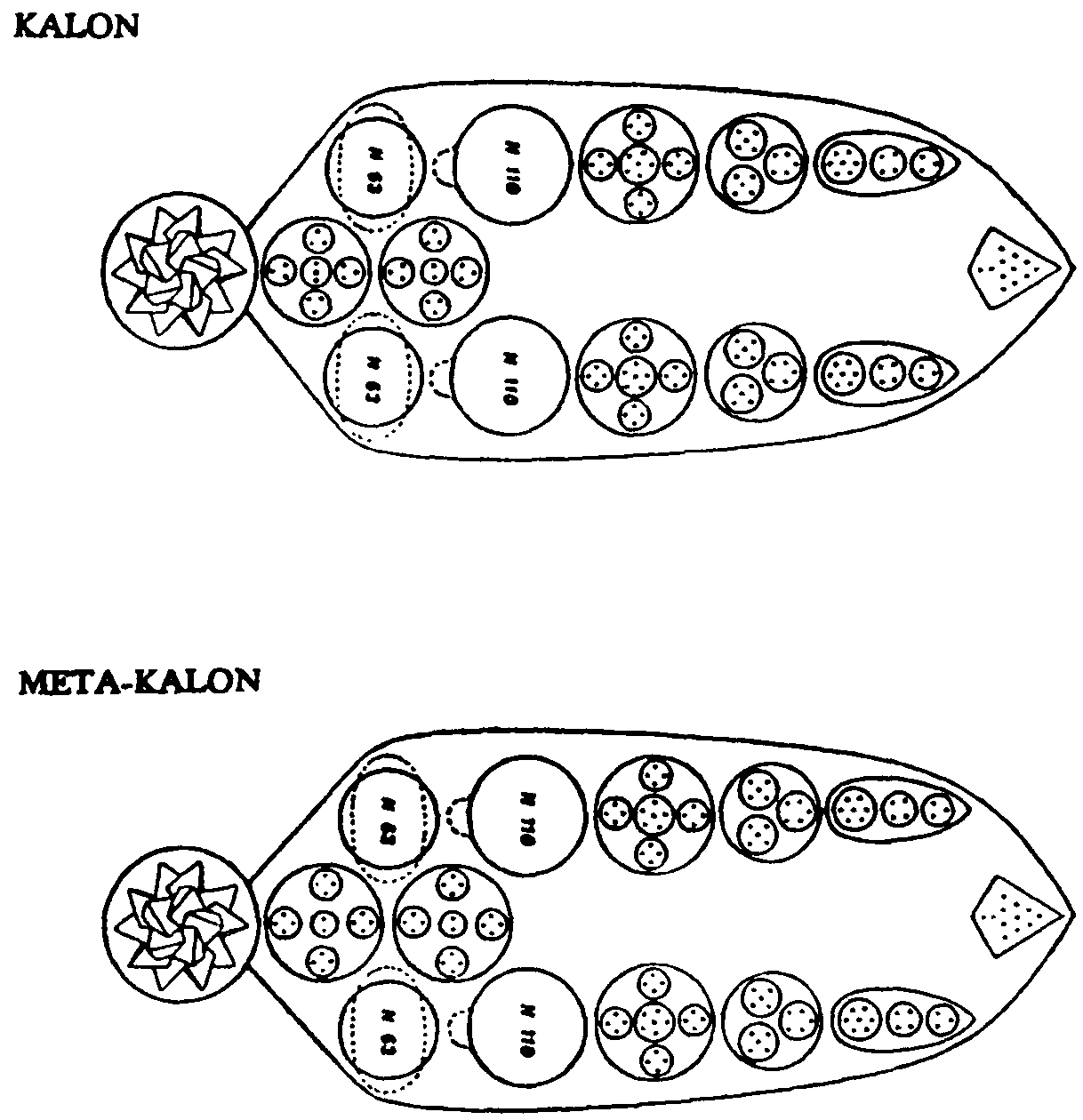
FIG.
153. KALON
Star.
The arms are now much more complex. Kalon contains twice the constituents
of Krypton, with the addition of Xe14 and Xe15 from Xenon and a curious
cone. Ka12, possessing a kind of tail. Fig. 153.
Only
a few atoms of Kalon and Meta-kalon have been found in the air of a fairsized
room. This probably accounts for the fact that they have not yet been isolated
by science.
Kalon
n ---Nel20+6(Xel5+Xel4+2N63+2NI10+2Ne22+2mNel5+2Arl4+Kal2I
Meta-Kalon
= Ne120-1-6[2mXe18+2N63-h2N110-h2Ne22-b2mNe15-1-2Ar14+Ka12J
260
OCCULT CHEMISTRY
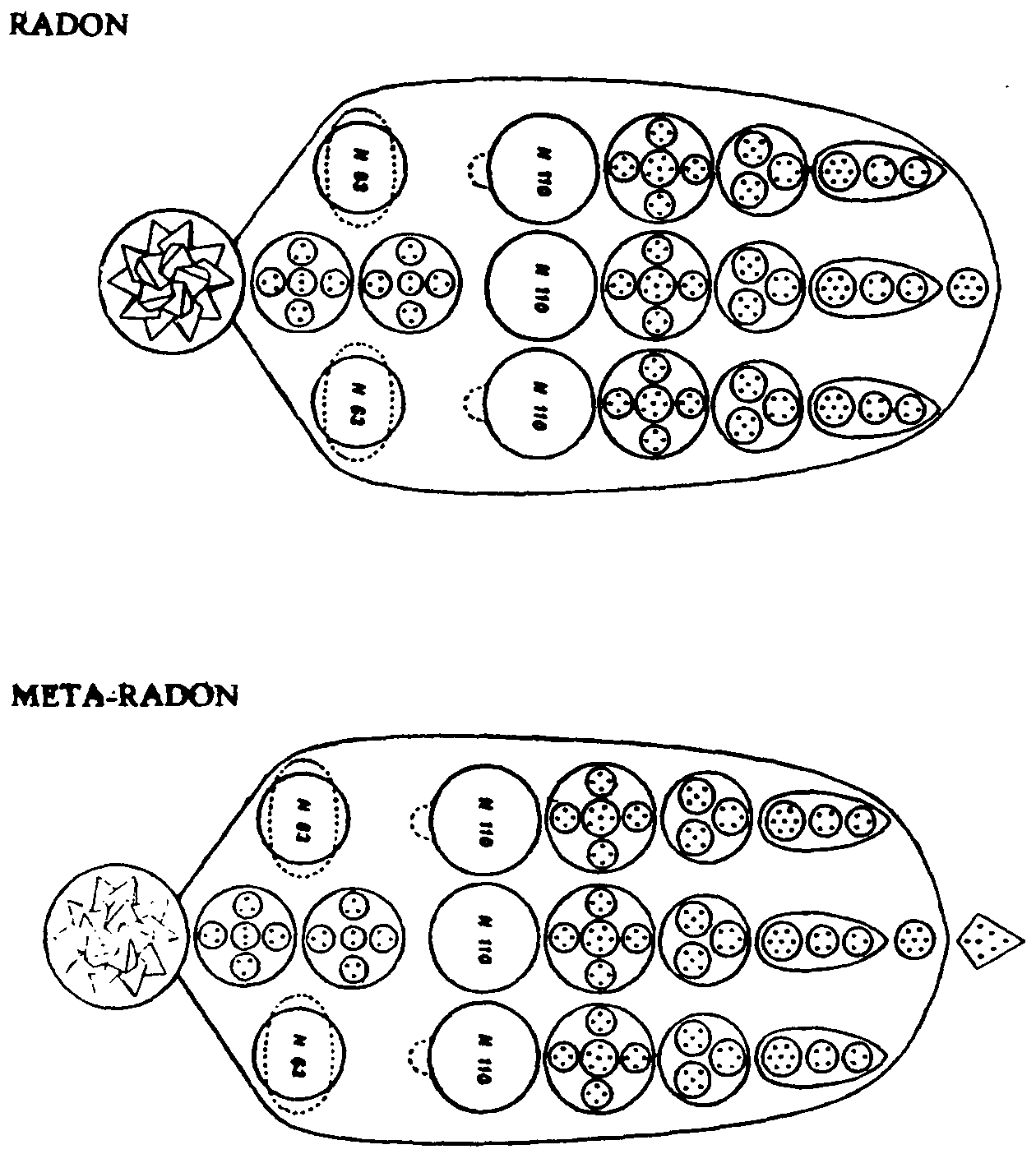
FIG.
154. RADON
Scientists
place Radon in this group of the inert gases. It was first known as Radium
Emanation and is formed by the action of the powerful vortex of Radium.
The central globe is, as usual, Ne120.
Star.
The six arms
each contain three columns.
Radon==
Nel20+6[Xel5+Xel4+2N63+3NllO+3mNe22+3mNel5+3Arl4+1.7]
outside the arm, and not within it.
Metes-Radon
= Ne120+6(Xe15+Xe14+2N63+3N110+3mNe22+3mNe15+3Ar14+I,7
+
mRn.7)
Central
globe = 120 Anu
6
arms of 652 Anu - 3912
Total
= 4032 Anu
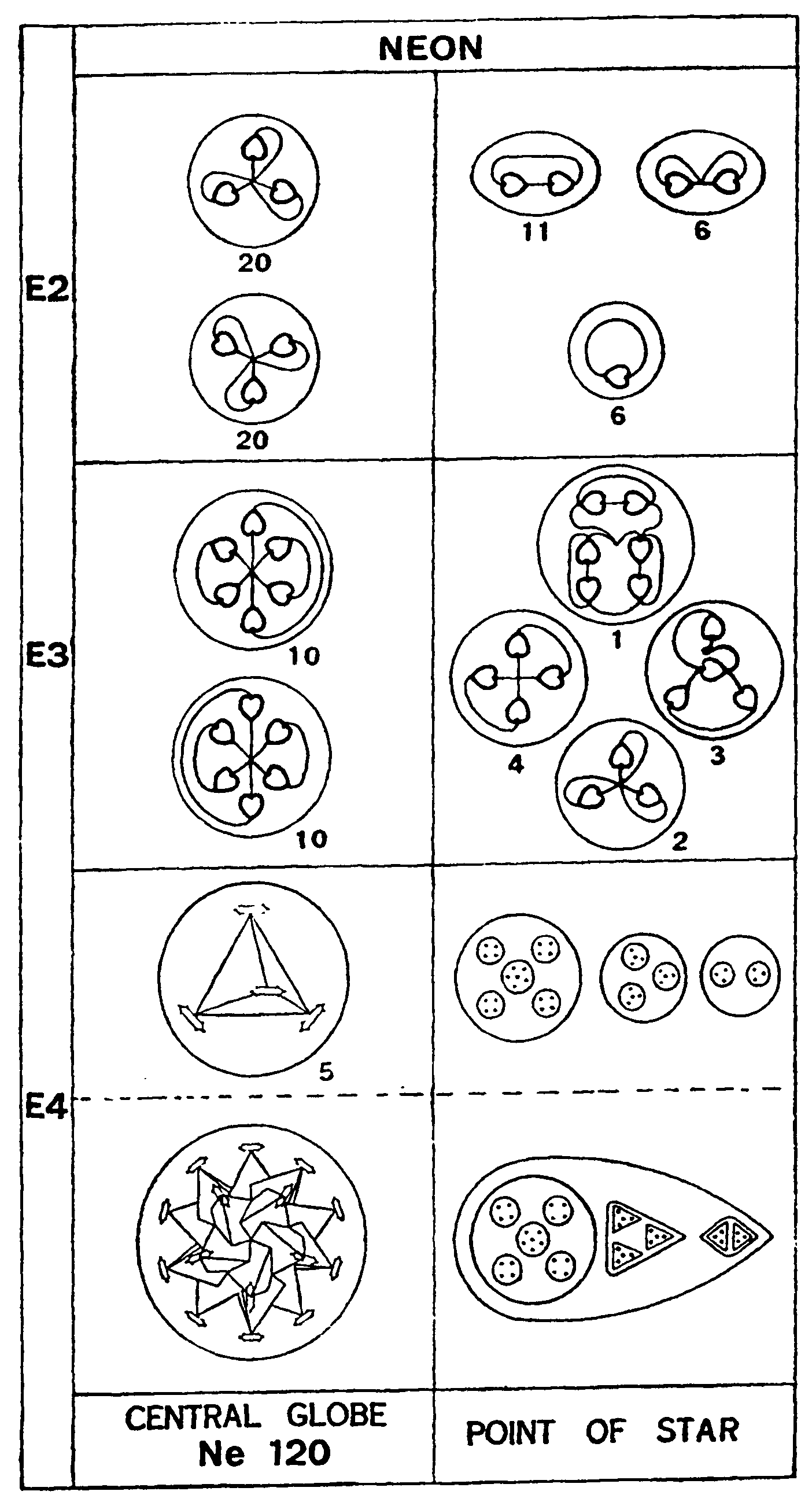
FIG.
155. DISINTEGRATION OF NEON
Fig. 156 shows the elements of the Star Group in a condensed form, from which their relationships can be studied.
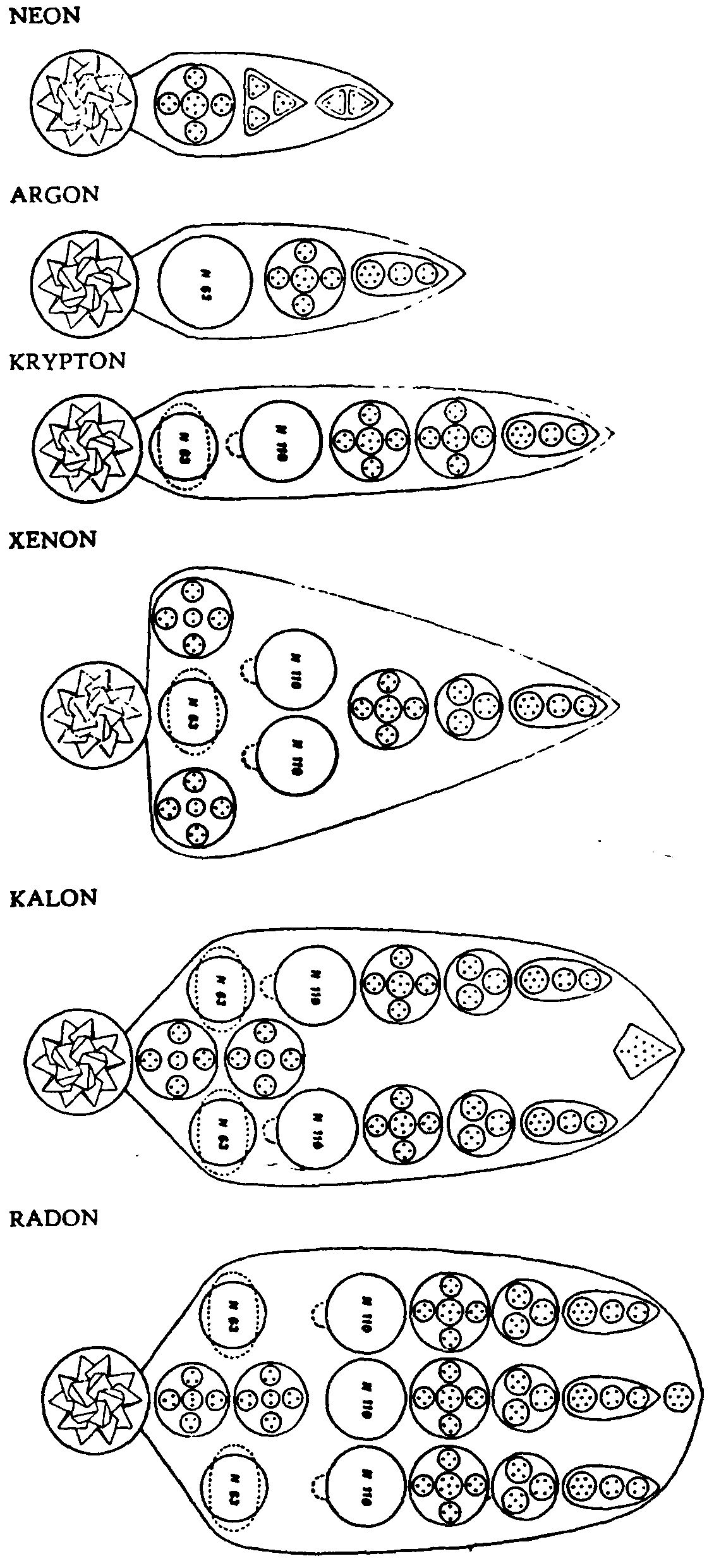
FIG.
156. THE STAR GROUP